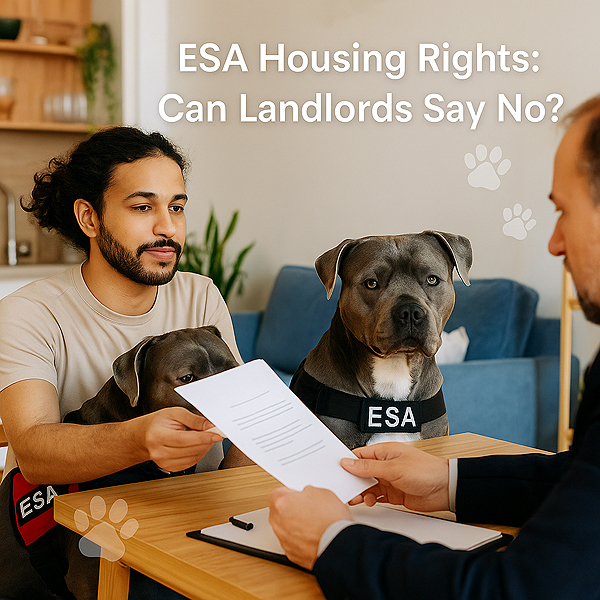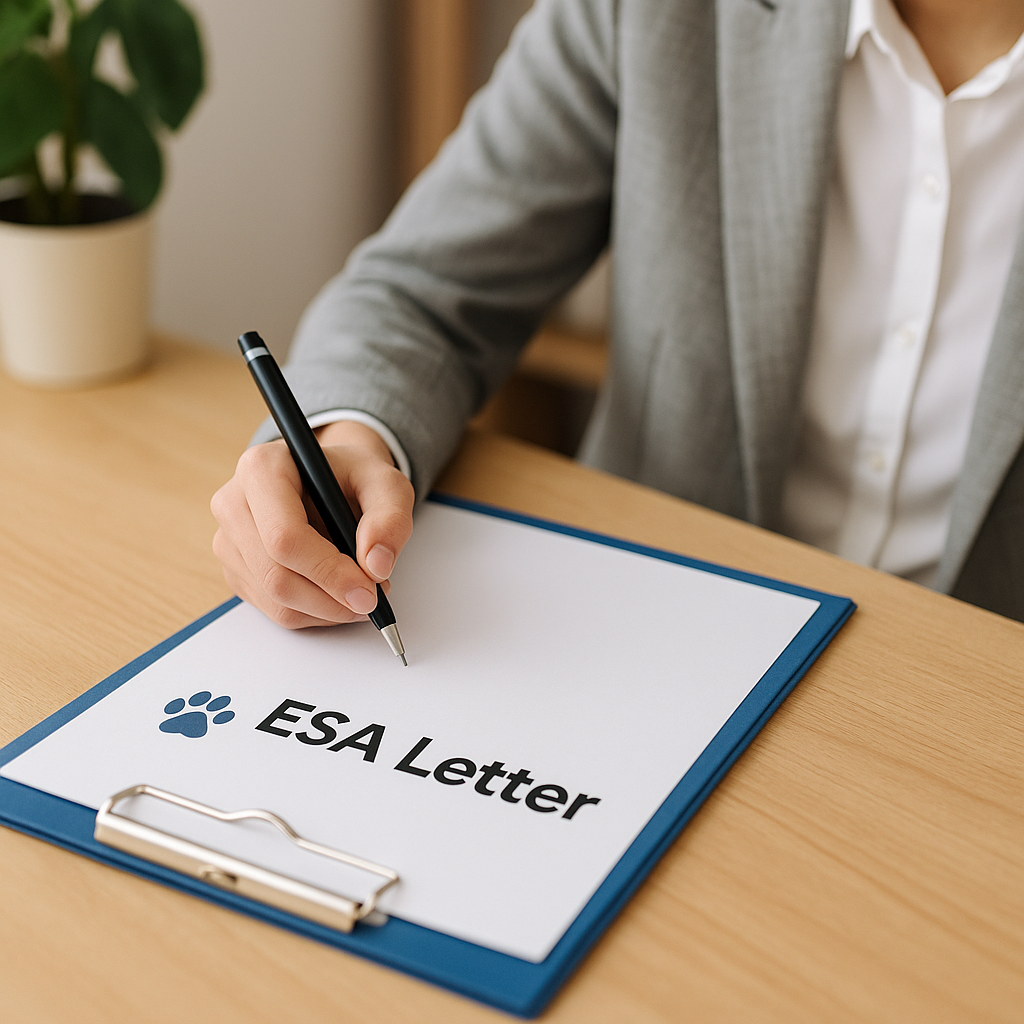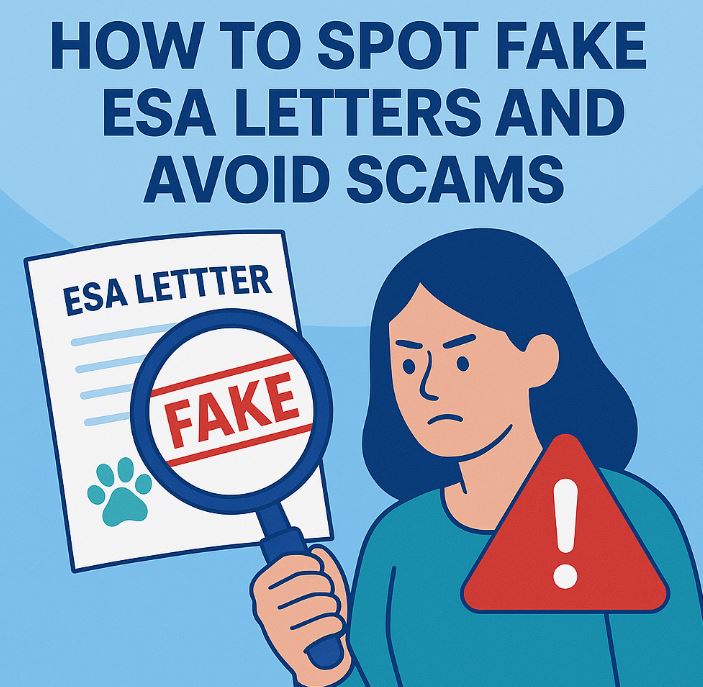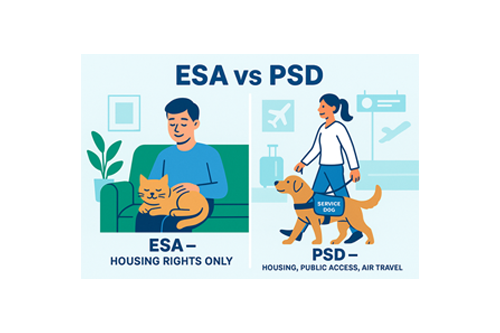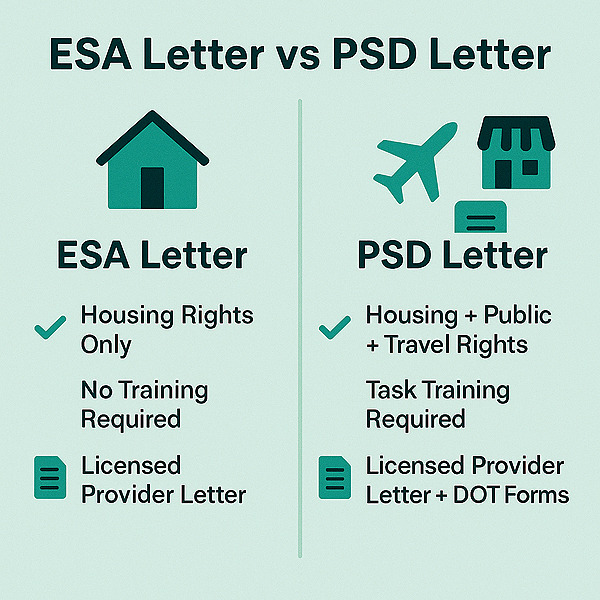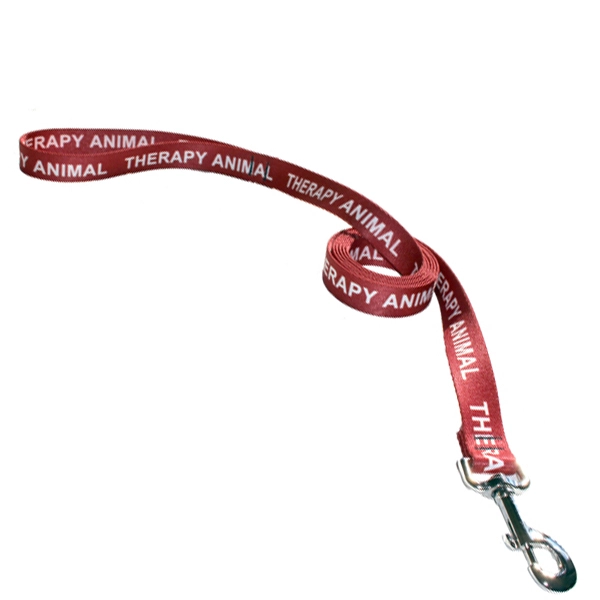
Introduction
If you’re an ESA owner planning to travel, you’ve probably already discovered how confusing the rules have become. Since 2021, U.S. airlines no longer recognize Emotional Support Animals (ESAs) as assistance animals. Under updated DOT regulations, only task-trained service dogs are allowed to fly for free in the cabin.
But here’s the part most people don’t know:
👉 Many international airlines STILL accept ESAs in 2025.
This creates a weird patchwork of rules where:
- Flying from Los Angeles to Tokyo? ESAs may not be allowed.
- Flying from Mexico City to Bogotá? Some airlines still welcome ESAs.
- Flying from Dubai to Spain? Depends on the carrier and their internal policy.
Because these rules vary wildly by region and airline, ESA owners can find themselves stuck — sometimes literally at the airport.
This guide breaks it all down in plain English: which airlines still accept ESAs, where they’re recognized, the documents you’ll need, and how to prepare. And for ESA owners who need to fly domestically within the U.S., we’ve included a crucial section on transitioning an ESA to a Psychiatric Service Dog (PSD) when appropriate.
🔗 Jump to a Section
- Airlines That Still Accept ESAs in 2025
- Countries Where ESAs Are Recognized or Not Recognized
- Required ESA Documents for International Travel
- Airline-by-Airline ESA Policies (2025)
- Tips for Flying Internationally With an ESA
- Common Mistakes ESA Travelers Make
- How to Transition an ESA Into a Psychiatric Service Dog (PSD) for U.S. Flights
- The Bottom Line
Airlines That Still Accept ESAs in 2025
While U.S.-based airlines discontinued ESA acceptance completely, several international carriers continue to offer ESA accommodation — mostly in Latin America, parts of Asia, and a handful in Europe.
Here are the most common carriers that still allow ESAs:
🇲🇽 1. Volaris
Allows ESAs on many routes within Mexico and Central America.
🇨🇴 2. LATAM Airlines
Accepts ESAs on select routes, including South America to Europe (depending on local laws).
🇵🇦 3. Copa Airlines
Accepts ESAs on international flights throughout South and Central America.
🇲🇽 4. Aeroméxico
Occasionally accepts ESAs depending on destination country rules.
🇨🇦 5. Air Canada (Limited Acceptance)
Recognizes ESAs only on certain international routes where the destination country classifies ESAs separately from pets.
🇴🇲🇶🇦 6. Middle Eastern Carriers (Selective)
Some Middle Eastern airlines allow ESAs on long-haul flights depending on the cabin, but this is highly case-by-case.
🚫 Airlines That Do NOT Accept ESAs
- All U.S. airlines
- Most European carriers
- Most Asian airlines
- Any airline following strict DOT-based guidelines
Always check both the airline policy and the destination country rules — some airlines allow ESAs but the country does not. ESAs can still fly utilizing the airlines’ pet policies and procedures.
Countries Where ESAs Are Recognized or Not Recognized
A few countries recognize ESAs under their mental health or disability laws. Many others do not.
🌎 Countries More Likely to Recognize ESAs
- Mexico
- Colombia
- Brazil
- Chile
- Panama
- Argentina
🌍 Countries That Do Not Recognize ESAs
- United States
- United Kingdom
- Australia
- New Zealand
- Most of Europe
- Japan
- Singapore
- UAE
- China
In these countries, ESAs are treated strictly as pets.
Required ESA Documents for International Travel
If you’re flying with an ESA on an airline that still permits them, you’ll usually need:
📄 1. Valid ESA Letter
Must be:
- Less than 12 months old
- Written by a licensed mental health professional
- Specific to your condition
💉 2. Pet Health Certificate
International routes require veterinary clearance.
💉 3. Vaccination Records
Rabies documentation is mandatory almost everywhere.
✈️ 4. Airline ESA Form (If Required)
Some carriers have their own internal forms.
👜 5. ESA Carrier or Leash Rules
Some require ESAs to be in a carrier during takeoff/landing.
Airline-by-Airline ESA Policies (2025)
This section will be expanded as policies evolve, but as of 2025:
Volaris
- ESA allowed in cabin
- Must remain under seat or on lap if small
- ESA letter required
LATAM
- ESAs accepted on select routes
- Additional vet paperwork sometimes needed
Copa Airlines
- ESAs allowed internationally
- Health forms required
Aeroméxico
- ESA policy varies by destination; always confirm by phone
Air Canada
- Limited ESA acceptance only on international routes
Tips for Flying Internationally With an ESA
- Book early — ESA slots can be limited
- Call the airline to confirm (never rely solely on the website)
- Carry paper + digital copies of all documents
- Use a vest or ID for clear identification
- Bring calming aids if your ESA is anxious
- Understand the destination country’s quarantine rules
Common Mistakes ESA Travelers Make
- Assuming U.S. rules apply internationally
- Using an old or invalid ESA letter
- Forgetting country-specific requirements
- Arriving without printed documentation
- Booking a code-share flight (the operating airline’s policy matters, not the booking airline)
⭐ How to Transition an ESA Into a Psychiatric Service Dog (PSD) for U.S. Flights

This is one of the most important — and misunderstood — topics for ESA owners.
Since ESAs are no longer permitted on any U.S. airline, many people wonder:
“Can my ESA become a Psychiatric Service Dog?”
The answer is: Yes… but only under very specific conditions.
Here’s the straightforward, human explanation.
🧠 When an ESA Can Become a Psychiatric Service Dog
Your ESA may qualify to become a PSD if:
- You have a diagnosed psychiatric disability
- Your dog can be trained (or already performs) specific tasks
- Those tasks directly help alleviate your symptoms
Task training is the key.
Comfort is not enough.
Examples of Real PSD Tasks
- Interrupting panic attacks
- Deep pressure therapy
- Guiding you to exit during anxiety episodes
- Bringing medication during dissociation
- Performing tactile stimulation to ground you
- Alerting before psychiatric episodes
If your dog does any of these tasks — and does them reliably — your ESA may transition into a PSD.
🐕 Training Requirements
To legally be considered a PSD, your dog must be:
- Calm
- Well-behaved in public
- Non-aggressive
- Able to stay focused around distractions
- Housebroken
- Capable of performing tasks on cue
Can you train your own PSD?
Yes.
Federal law (ADA) allows owner-trained PSDs.
📄 PSD Documentation for U.S. Flights
While PSD letters are helpful and often requested by landlords, airlines mainly require:
✈️ DOT Service Animal Air Transportation Form (mandatory)
This form confirms:
- The dog is trained
- The dog behaves
- The dog can travel safely
✈️ DOT Relief Attestation (for long flights)
Required for flights 8+ hours.
Optional but Helpful Travel Items
- PSD identification card
- PSD vest
- Training certificate
- Public-access test certificate
These are not legally required, but they eliminate 90% of conflicts with airline personnel.
🧭 Should You Transition Your ESA into a PSD Just to Fly?
Here’s the honest, expert answer:
Only if your dog is truly performing psychiatric tasks.
Many ESA owners realize that their dog already is performing disability-related tasks — they just didn’t know that qualified as PSD work.
Others discover that their ESA isn’t a good candidate because they’re:
- Too anxious
- Too reactive
- Not trainable for advanced tasks
If that’s the case, forcing the transition is unfair to the dog and puts you at risk of travel denial.
NSAR helps provide ethical PSD evaluations so individuals understand whether their animal appropriately qualifies.
✔️ When Transitioning to a PSD Makes Sense
- You regularly experience panic attacks
- You dissociate in public
- You require grounding or tactile support
- Your dog already comforts you in structured ways
- You travel often for school, work, or family
In these cases, transitioning to PSD status is appropriate, necessary, and life-changing.
The Bottom Line
International travel with ESAs is still possible — but only through a handful of airlines. For U.S. flights, the only path forward is transitioning your ESA into a fully task-trained Psychiatric Service Dog when appropriate.
Whether you’re flying internationally with an ESA or preparing to travel domestically with a PSD, the right documentation and training are essential.
👉 If you need a legitimate ESA or PSD letter, or guidance on whether your animal qualifies for PSD status, NSAR can help you navigate the process with clarity and confidence.



